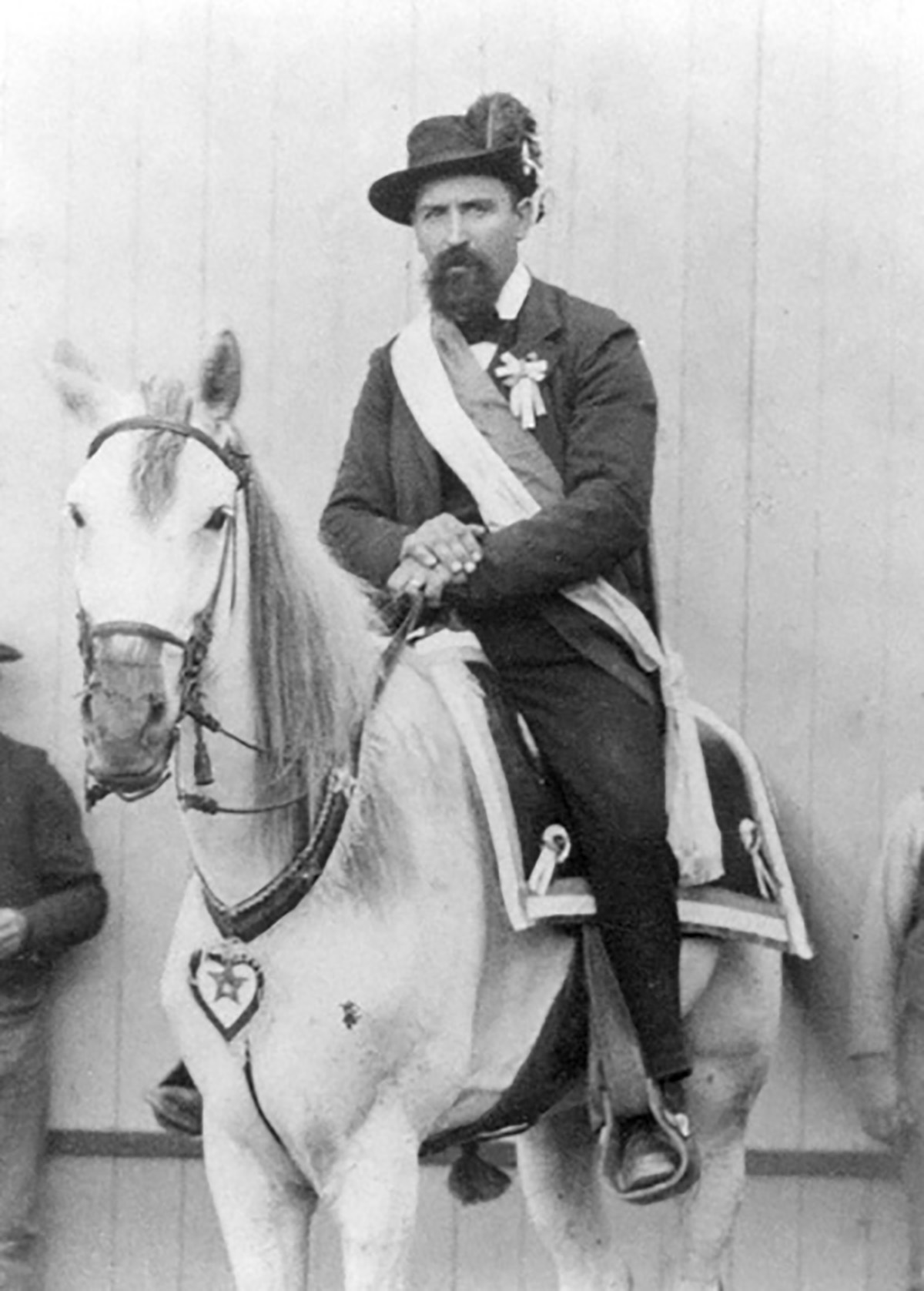|
|
Joseph Reynier & Family, SCV Pioneers.
By GEORGE STARBUCK, His Great Grandson.
January 2002.
[WALKER FAMILY / GEORGE STARBUCK PHOTO INDEX]
Joseph Reynier (pronounced ren-YAY — ed.) was born in the Southern Alps of France on March 30, 1849. He spent a pleasant young life with his eight brothers and one sister. The family had a farm where they raised cattle, sheep, pigs and goats. During the time he was growing up in the Champsaur Valley there was a great deal of civil unrest and crop failures.
Like many young men before them, he and his brother Mattieu heard talk of new opportunities in America and were directed on a course of new adventure. They set sail from La Havre in1864 along with Mattieu's wife Marie.
Soon after arriving in New York and hearing all the talk of California they booked passages around the cape to San Francisco. They remained in San Francisco for several years and, after purchasing a herd of sheep, supplies and a wagon in 1867 they headed out taking a route across the state, over the Sierras at Donner Pass. Dropping into the Carson Valley, they continued into Bishop where they spent time letting the sheep graze. Southern California was their ultimate destination, but all during the trip they were looking for other favorable places to settle.
The trip was slow and arduous, taking one year to drive the sheep into Los Angeles. Matthieu had decided to stay in the now growing community of Los Angeles. After hearing of available land for homesteading in the Placerita Canyon area, Joseph set out through the San Fernando Valley and up over the old Spanish trail to the mouth of the Placeritos. He passed many active placer mining operations being fed by water from the hand-dug flume that can still be seen in upper Placerita Canyon.
On his journey eastward he passed a dugout against the hillside covered with wild grapevines where the Cuneo family lived. Nick Cuneo and his wife, a Native American from a local tribe, and their children raised corn, chickens and turkeys. The original wild grape cuttings planted over the dugout came from above the canyon waterfall. The remains of the dugout can still be seen along the old dirt road.
A mile east of the Cuneo family home, Joseph finally arrived at his land near the head of the Placerita, where it drops into Sand Canyon. This was the place he'd traveled half way around the world to find. The year was 1868.
Joseph homesteaded 600 acres of land [sic: 487.65 ares] and built a Victorian style ranch house, barns and corals. He planted wine grapes, olive and fruit trees. Water was plentiful in those days. All of the streams ran year-round but he also tapped into a spring far up in the San Gabriel Mountains. He laid over two miles of iron pipe down through the canyons to feed a reservoir. This spring still provides water for Rancho Maria in Sand Canyon.
In 1882 he married Josephine Sambien, originally from Switzerland. They had three children, Josephine, Hortence and Joseph Jr.
During the time he was establishing his homestead, other settlers started moving into the area. The Bello, Escalier, Ghiggia, and Cosolo families were always welcome to share in the homemade wine and cheese. They were close friends and neighbors, often bringing homemade sausages and bread to the visits.
The children from the families all attended the newly established Sulphur Springs School started by Thomas Mitchell in 1879.
After the death of Josephine in 1896, Joseph married Della Siesmat in 1901. He and Della had two children. One died as an infant and Euginie died at age 19. Both are buried under the olive trees still growing on the property.
Joseph died at age 87 on his birthday, March 30, 1936.
George Starbuck is grandson of Hortence Walker and son of Melba Fisher.
The site owner makes no assertions as to ownership of any original copyrights to digitized images. However, these images are intended for Personal or Research use only. Any other kind of use, including but not limited to commercial or scholarly publication in any medium or format, public exhibition, or use online or in a web site, may be subject to additional restrictions including but not limited to the copyrights held by parties other than the site owner. USERS ARE SOLELY RESPONSIBLE for determining the existence of such rights and for obtaining any permissions and/or paying associated fees necessary for the proposed use.